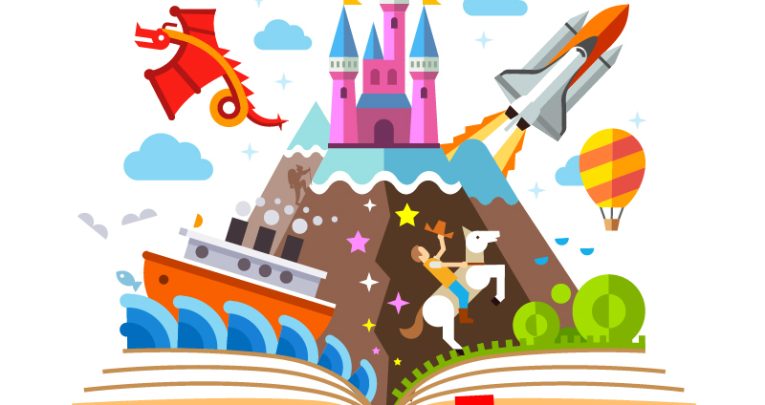Develop Children’s Empathy Through Creative Storytelling

Natasha Dennis and Tonya Meers explain the many benefits of employment a creative storytelling approach to learning…

Creative storytelling uses stories as the basis for creating objects that children can use to interact with a story. Through doing this, the children will gain a deeper understanding of what the story is about and learn more from it. Interacting with the story will help children to remember its key points, and can also be a great way to help them develop empathy with the story’s characters.
This doesn’t just involve drawing a picture from the story, but creating things from that story. Examples might include making puppets of the characters, building a pyramid from a story about ancient Egypt or making a chariot from a story about the Romans. If the children can ‘become’ that character, they will be much more interested in what happens to them, and hence learn so much more.
So how do you choose the stories?
Lots of Dialogue
Firstly, choose a story that uses a lot of dialogue to advance the narrative. For younger children, be careful when choosing picture books where the story is mostly told in images, as this limits the opportunities children will have to use their objects. Rainbow Fish to the Rescue by Marcus Pfister, for instance, uses lots of dialogue and offers lots of opportunity for movement as well – a child could use a puppet of a fish and have it talking and moving.
We’ve previously got children to make ‘story boxes’ for this book so that they can act it out. For older children, the dialogue can be used to turn the story into a play. With scripted drama now included within the primary national curriculum, taking an existing story is a great way to develop this.
Repeated Phrases
“I’ll huff and I’ll puff….” From just those four words I’m sure you remember the rest of the story and could recite it right now. Repeated phrases are hooks, often warning the listener that something is about to happen. Repeated phrases are a great way to get children to interact. It’s a device we use a lot when we are writing, such as a crowd chanting the name of a gladiator, or a phrase that has to be said to make a wish. Take it from us, having a hall full or children chanting ‘Finicky fish!’ at you is a sight to behold!
Descriptive language
At KS2, more detailed character descriptions can help to illustrate the type of language they would use, what they look like and how they might act in certain situations. This can then inform how the children go about making their puppet, model or object from the story.
With younger children, where there tends to be less or very little description in the stories to start with, they can be encouraged to rely more on their imagination.
Multiple characters
Stories with multiple characters are useful if you plan to act the story out – in a story box using puppets, for example, or by the children themselves using masks. You can also use this approach to have the children retell the story from the point of view of different characters. If they’re able to build an attachment to a certain character, they can then be encouraged use that character in their own writing, thus helping to develop their empathy skills.
A story such as Roald Dahl’s Charlie and the Chocolate Factory offers lots of characters for the children to get stuck into. It also helps from a classroom management point of view, since you can take a group of children equal to the number of characters for the creative activity.
Using creative activities linked to stories will help deepen the engagement of a class. Being more engaged will mean that the learning becomes embedded, thus increasing overall levels of knowledge retention.
Creative storytelling also provides opportunities for children to develop their language and writing skills through empathising with characters, as well as scope for drama activities to help foster teamwork and make lesson more inclusive, especially for children with SEN.
Natasha Dennis and Tonya Meers run Little Creative Days – a producer of puppet-making kits based on stories written around KS1 and KS2 curriculum topics. For more information and details of their creative literacy training and storytelling sessions for schools, contact 01488 468 901 or visit www.littlecreativedays.co.uk. Browse more ideas for Empathy Day.










